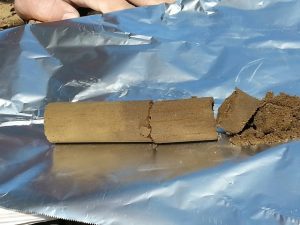In this post, Mirco Bundschuh highlights the recently funded JPI (Joint Programming Initiative) project “Impacts of MicroPlastics in Agrosystems and Stream Environments (IMPASSE)” on which he is working with colleagues across Europe and from Canada.
Microplastics are defined as plastic pieces with various physico-chemical properties of a size less than 5 mm. Reports suggest that their annual applications to agricultural land are similar to their annual load to the global oceans. A primary source of microplastics to agroecosystems in some countries might be the use of biosolids and sewage sludge as complementary fertilizers. Although this procedure likely releases microplastics directly into the environment, there is limited knowledge on their fate and effects in soil ecosystems as well as adjacent agricultural streams.
The project IMPASSE is ultimately aiming at contributing to solutions that will safeguard agricultural sustainability, human and animal health and the key role of wastewater treatment utilities in the circular bioeconomy. In a first step, the project partners jointly aim at quantifying microplastic fluxes from sludge and biosolids to agricultural fields and further on to aquatic systems at the catchment scale. This work goes hand in hand with an ecotoxicological evaluation of potential adverse effects in both soil and freshwater ecosystems.
Based on these insights, a decision support tool will be developed to help quantify microplastic fate in the agriculture-freshwater transition zone under different agricultural practices. Best management practices will be discussed with stakeholders so as to mitigate potential negative effects of microplastics in the environment, while the economic and environmental consequences of such options will be evaluated in the final phase of IMPASSE.
In summary, this project aims to estimate the relevance of agricultural practices (i.e. use of sewage sludge as fertilizer) for the release of microplastics to aquatic systems, which represents a substantial knowledge gap. The project began recently and we appreciate the opportunity this channel provides to give updates on our efforts, and we look forward to sharing our first insights soon. There are also some positions at the PhD and Post-doc level that are about to be filled – we will keep you posted.
The project is managed and coordinated by the Norwegian Institute for Water Research and is run in collaboration with four institutions in Europe (Swedish University of Agriculture, Vrije University of Amsterdam and IMDEA-Water, Spain) and Canada (Trent University).
You may also be interested in a recent paper.

